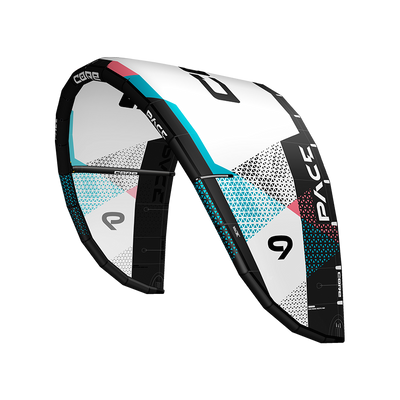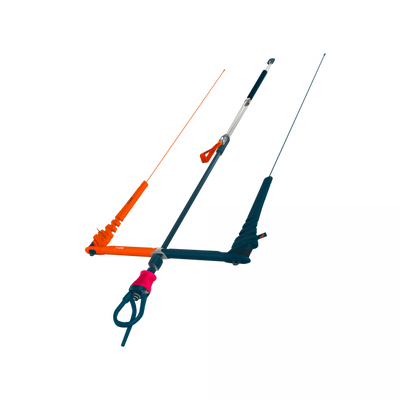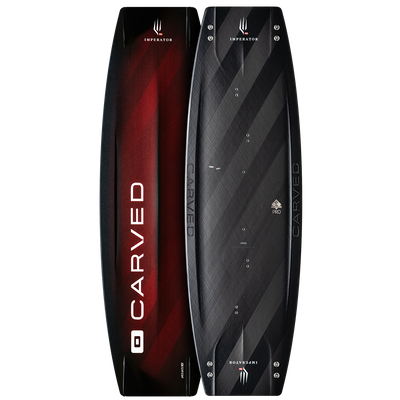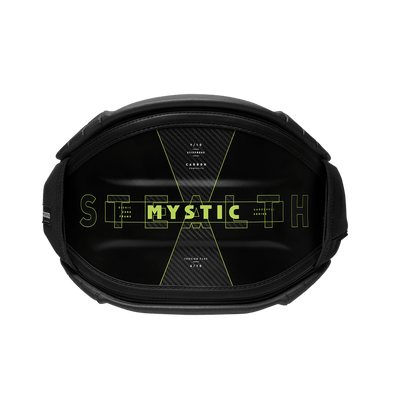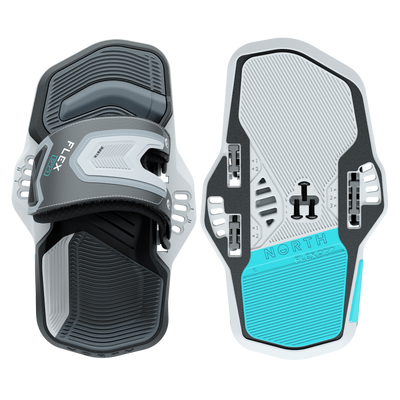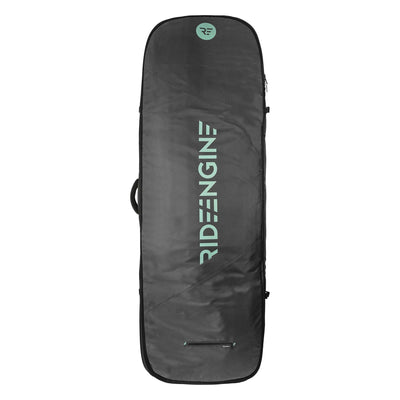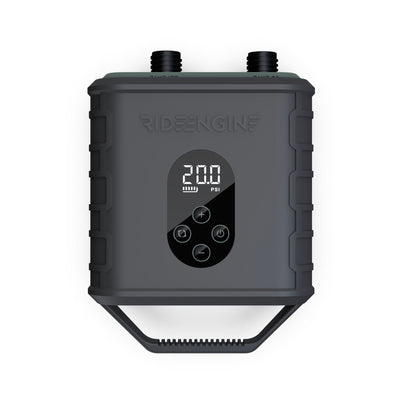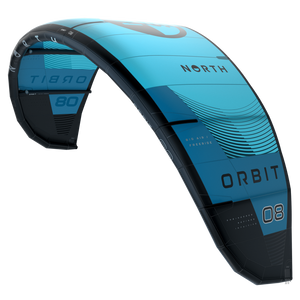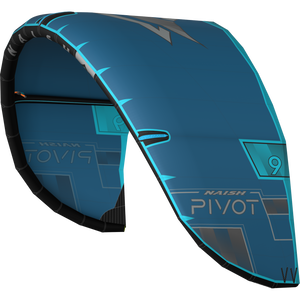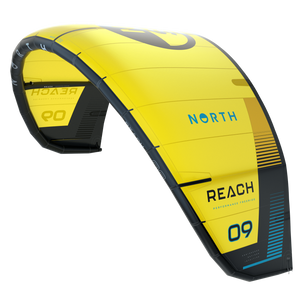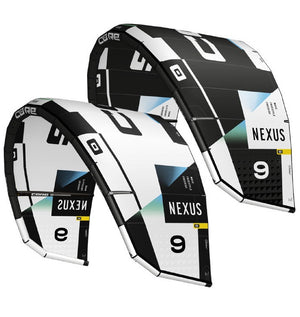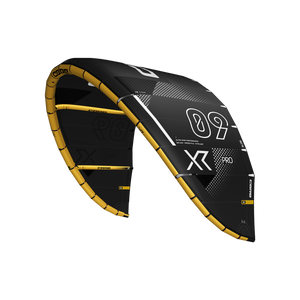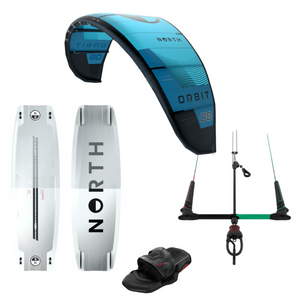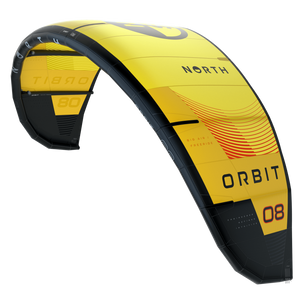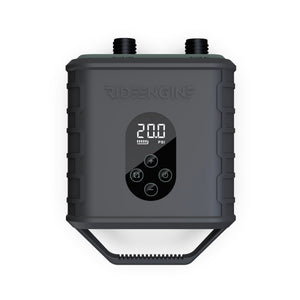Kiteboarding
REAL offers a vast selection of kiteboarding and kitesurfing gear at the best prices—backed up by the highest level of customer support and expert advice.
REAL Reviews
We review the latest kiteboarding gear so you can make your next purchase with confidence. All reviews are published on the related product pages or you can explore our kiteboarding review playlist.
Recent Reviews
from 1910 reviewsI wing foiled with the F800 in light winds on flat water and really liked it. My only real complaint with winging the One Lock Glide series was that it felt like it took some effort to get up on foil and that it would come off foil pretty quickly without keeping it powered. I was worried that taking the Flow out in light wind would have similar results but I was pleasantly surprised. There are HA foils on the market that perform better, but it was pretty efficient through the water, stable at speed, easy to turn, and recovered well from breaching. I think if you are a proficient foiler then you could skip the Glide and move straight to the Flow. Also the One Lock system is pretty sick, super easy to break down and no hardware (other than the mounting hardware), or tools to deal with. I think One Lock is a must buy for anyone foiling behind a boat. So easy to put together and break down. Just take it apart, put the covers on, and throw it in the bilge storage. No need to chase hardware around the boat or have someone on foil holding duty while its sitting in the boat taking up room.

The Code Zero is my go-to foil kite. I think some of the other foil kites on the market tend to fly like plastic bags, pretty slow to react and lots of flutter on the trailing edge. If you are a great kite foiler then these kites are probably exactly what you're looking for since they drift better. But as an intermediate kite foiler (on a good day) I find that I want my foil kite to fly like a kite. The Code Zero reacts quickly to input, relaunches well, and down loops predictably when I need a bit of power going downwind. The trade off here is that it doesn't drift as well as other foil kites I've flown and has a tendency to back stall when you ride towards it. The 14m Code Zero is also a great light wind option, it relaunches well and has decent power.

Rode the 4.2m at wing hole yesterday in 20-27 mph. People were winging on 3.5-4.5m wings. If I was going to parawing I would have taken an Ozone 3m. I rode the same foil set up I have been parawinging on which is Armstrong Midlength 75, HA880/220.
Setting it up is pretty straightforward. It has a 9mil inflate valve so you do need to make sure you have the old school pump nozzle. The bridle has a really basic A, B, C line set up and flagging safety to the leading edge. This bridle is significantly easier to deal with than a parawing but it is still a bridle on a kite that takes a little sorting out.
Flying it feels just like a parawing. It is responsive to turning but less twitchy feeling when you turn is side to side. The main thing I noticed was that it is much less sensitive to back stalling like a parawing. With the parawing it is hard to find the power and with the Plume you know where the power is at all times. It’s like a little inflated ball that sits in front of you creating power when you want it.
Because it is more stable than a parawing, the take off was a lot easier. Still not easy, need to wait for the puff, get to your feet, bear off, get speed, pump on to foil, but it is much easier than parawinging. Once on foil the bar balance and stability translate to a very easy ride.
The Plume has massive wind range too. You barely feel the gusts when they hit you. It goes upwind and downwind very easily as well. There is very little pull on your arms and riding toeside is no problem. Turns are pretty easy since it is stable and responsive. I did go under the wing on a turn and horseshoed myself which was kind of a mess with my board and board leash through the wing bridle and wing leash. 😂 I came up hog tied on one leg. I do recommend a hook knife for beginners.
Flagging out is easy to get to the leading edge flag handle but hard to get the bar back in your hands and wing flying while on foil. It is also really flappy and annoying when flagged out. The parawing blows doors on the k wing in the downwind category since you can fully pack it away.
The Plume feels more like kiteboarding than winging. I feel the same about parawinging, and that is one of the appeals. With the Plume you can go fast, jam upwind, carve turns downwind and just fly around with the wing in the sky the whole time. It feels a lot different than winging which feels more locked and loaded like windsurfing. Winging has much more light wind range, higher performance with smaller gear and is better in waves and for flagged out wave/swell riding than the Plume.
Who’s the Plume K Wing for?
The Plume feels like training wheels for parawinging. Much simpler bridle. Inflated which makes it safer and easier to handle in the water. Full depower flagging safety system. Great balance and power delivery for easier take off. Great drive upwind and fun for riding powered downwind. Mega wind range.
People will find that after they learn to ride it, they will love using it for just taking a session in place or in a small upwind/downwind zone. You are basically kite foiling with a kite that has no lines.
It will be better for the less skilled foiler to learn to parawing. Some will graduate to parawing for full stow downwinders but I think most people will just ride this as an alternative to kiting or winging since it’s so much fun.

Overall:
For the surfer at heart with hands free operation, giving you the ability to take in the vibe of the lineup including the skills of prone paddling, positioning for pop-up and making duck-dives and all the activities of being in the lineup but not requiring the nuisance of hand held remote, lanyard, tiny little screens and trigger power control. The safety of all power and control systems integrated into the board makes it more desirable in surf.
Setup:
1-2 foot waves, slight 5mph side off breeze. Long period, clean swell. Flitelab AMP 4-6 31 liter board, Mast mounted just past mid point of tacks. Armstrong 980ha/220glide on 60cm fuse and 75cm perf mast. Timers tuned to 60 sec for easy paddle mode and 10 sec for power boost mode. Rider weight 155lb and capable of 4-1 wave linking, pumps and carving and typical prone foil setups (w/o any external power). Wave experience with winging, FoilDrive.
Likes:
Great capabilities and features packaged in a simple to use product with intuitive controls that work really well together.
Really bright and crisp high resolution multi-color deck mounted LCD status screen.
Easy to read display in the sun and water.
Well designed layout of display control pad, great use of easy to read fonts. When powered on, defaults to a picture of the battery with the percentage available, just like a MacBook.
Button layout well thought out and intuitive with each activity (paddle or wave) mode on opposite side and a diff shape button (oval vs. triangle). Can be easily learned and pressed with out looking after only part of a session.
Being able to use any foil kit, no limits. Use the same foil winging or behind the boat, easy to unbolt - no extra work, tools, tape or special alignment or extra screws.
Super nice deck pad. Board carbon quality super high.
Enjoyable to sit on, pivot and move around - that its so similar to a typical prone foil kit, the learning curve is maybe 3 waves.
Being able to catch non-breaking waves as a prone foiler.
High performance board that paddles easy, fast, and glides into waves - even with out using the power.
Being able to pump like a prone board, with similar balance and projection and not having any drag with external batteries, cables, motors or props.
Board handles and turns easy, so experience can be drawn from other disciplines of foiling.
Rider stance stays the same as in other foiling disciplines like wake foiling, prone, and winging. No new balancing techniques to learn. Leverage what you know.
The system is so well balanced there is no alternative non-standard stance required in contrast to systems with external mast mounted motors and batteries.
Touching the deck down on pumps can be recovered on long pumps -its not the end of the world as it is with other mast mounted systems.
The low power paddle mode to get out to the waves is right speed and makes it easy to duck-dive any oncoming waves and white water.
The power boost mode pushes just as hard as other competitors mast mounted propeller systems requiring a hand held remote and trigger.
The way in which the motor automatically shuts down when the board reaches flight.
Battery status is constantly displayed, unless there is a countdown timer showing during a paddle or wave boost. This makes it really easy to see overall status of the system
Challenges:
Its important to note that the take off is slightly different than a pure prone foil kit. When the boost power combines with wave and with a foil taking flight, you need to stay squatted for an extra second during pop-up. This is subtle but it does improve success. Your stance stays the same, there is no change.

The S-Foam Helmet has been an amazing accessory for my foiling adventures, boosting my confidence when I'm pushing my limits out on the water. The material is amazingly flexible, yet resilient upon impact. It also allows me to wear a low-profile cap underneath for added sun protection without being too bulky. It's a perfect companion for progression sessions on the ocean and on flatwater.

I picked up the Majestic wing harness at the beginning of the season and I've enjoyed it thoroughly on a lot of sessions for both ocean and flatwater. The vel-cro connection stays tight and secure and the shape of the harness contours nicely to my lower back, providing excellent support, especially when I "hook in" with the wing. The attachment points on the back of the harness are placed well for both wing and board options and keep leashes out of the way while riding. Using the harness allows me to increase my time on the water by saving energy, especially when riding upwind.

It has been roughly a year since I initially reviewed this kite after riding it several times in varying conditions. Since then I have used the Code V2 as my daily driver, travelled with it, repaired it, taught on it, rented it out on lots of demos, sold quite a few, and landed my first loops with it. Looking back on the past year with this kite, I think I have fully explored it's ins, outs, best features, and limitations.
Initially I said that this kite would be good for people doing down winders. That derived mainly from the gentle bar feel and is true, but I think that is selling it a bit short. In reality this kite is for EVERYONE. Whether you are a complete beginner and need a kite that relaunches well and is stable and predictable when flying, or you are an experienced rider looking for a great budget option for big air, this kite is for you. The best part of it being good for all ability levels is that you will not outgrow it. It is just a great kite that makes all levels of the sport accessible. I think the single greatest aspect of how this kites flies is how predictable it is. This kite just does exactly what you tell it to do. It is so intuitive to fly that it gives you the confidence to send it right out of the gate. Something about the brain-bar-kite link here just works and I can’t say that about most other kites.
It also travels very well. One of the most overlooked parts of a kite is its bag. Let's be real for a moment, the bag for this kite is not a looker. It is offensively orange. But, it is also HUGE with a nice double zipper system that makes fitting the kite in a breeze. I can easily fit my kite, bar, harness, leash, helmet, pump, towel, and a snack all in one bag. This means that the only thing I actually have to carry on the walk from the car to the spot is my board. I travelled with this kite this winter and was able to get 3 kites, 2 bars, and 2 wetsuits into the 12m bag and check it. While I was sitting on the plane anxiously looking out the window trying to see if my bags made it, the bright orange kite bag was easy to spot on the luggage cart. My only real complaint about the bag would be that it doesn’t have the size printed on it, rather it has a small paper insert on top that has a tendency to fall out or fall apart when it gets wet.
We have not had any major problems with these kites yet, but we have had 1 bladder failure and a few small canopy tears. This is probably one of the easiest kites to do bladder changes on since it uses the screw off inflate valve system and has nice clips on the strut hoses. Some brands seemingly want you to destroy your fingers while doing bladder changes, the newer slingshot stuff is easy-peasy. On the topic of repairing this kite, Slingshot's warranty department is one of the best. I'm emailing them from an @realwatersports.com email to YMMV but of all the warranty departments I've worked with they are one of the best.
I'm not the only one that is really liking this kite. This kite is super popular for lessons because of its stability, relaunch, and intuitive steering. Virtually everyone that demo's this kite comes back loving it, and a large portion of our staff is riding this kite on a regular basis.
So what's not so good about it? First of all I wouldn’t call it a desert island kite, but I would call it MY desert island kite. When I go on a kite trip I primarily want a kite that does well in the nuking conditions I'm hoping to get, but if I need it to can also foil on a light wind day or ride waves. I think if roughly 90% of riders are honest with themselves, that is exactly what they want out of a kite as well. The Code V2 will foil and ride waves decently, albeit with a bit of a back stall tendency while drifting, but is mostly a twin tipping kite.
The other noticeable shortcoming of this kite is that it loses steering pretty fast as you depower it. All kites do this to some extent since you are effectively taking tension out of the steering lines, but the Code loses steering faster than most other kites I've flown. The good news here is that because the Code V2 is so affordably priced, you can buy 4 of them (and a bar) for the price of 3 kites from other brands. This way you could just switch to a smaller kite instead of depowering.
Last complaint is that this kite loops ok but not great. There are kites that loop faster and recover much faster, but if you are really looking to kite at that level then maybe the NXT is a worthwhile upgrade.
The reality is that in the last year we have entered the era of $3500-$4000 kites…which is gross. Don't get me wrong, every single $3000+ kite that I've flown has been fantastic, and if your budget allows then you should absolutely spend the money and get the best kite possible. But if you want a kite that costs half as much and still delivers 90% of fun then the Code V2 is for you.

The Amp Board is truly what I've been dreaming of since my first day prone surf foiling - a paddle assist and a slight boost to get into waves and on to foil.
I was able to ride the 4'6" at 32L, paired with an Armstrong 725 performance mast, 60 fuse, HA780 foil and speed 180 tail on a waist high glassy day on the Outer Banks.
I'm a very experienced surfer, foiler and weigh 160lbs. I liked the board at this size but could have ridden the 27L.
The controls are intuitive and perfect. I didn't think I would use the paddle assist but over an hour-long session I found myself using the paddle assist to get back out to the waves, or buzz over to a set just out of reach. The short boost was enough to catch every wave I wanted and just about enough to get up on foil with the slightest additional push from the wave. The shut off worked perfectly - with the longer paddle assist, I used it a few times to catch waves, and the boost immediately turns off once on foil. I found the performance of the board exception - not too heavy to surf foil at a high level and able to pump around the lineup to link waves. Additionally, I enjoy foiling for the surf paddle training through the summer. This board doesn't rob me of that during my session. I can still paddle it out to the lineup and even with the paddle assist, you still paddle, just at a faster pace.
The battery lasted just a bit over an hour with very little downtime between waves, boost and paddle assist. I lost track on the number of waves I rode in that hour!
The amp board still requires a breaking wave (or at least it did for me) so it's purely a surf foil product for me, compared to Foil Drive where you can ride unbroken waves but the performance of this board once on foil and into a wave is superior.
As a surfer, this is it!

This is without a doubt the best foil leash for any type of foiling in the waves or downwinding! Prone, Foil Drive, SUP/Downwind, parawing, even winging if you aren't doing a ton of foot switches. I use this mostly for prone foiling as a standard surf leash just gets endlessly caught and wrapped around your foil which is super annoying. The double coil is awesome because it keeps the leash nice and close to you so there isn't just a ton of extra length dragging around but still gives plenty of extension during wipeouts! Would recommend this leash for just about any foiler!

Been loving this Reaxh for easy riding. The 2025 Reach was a big improvement on all around performance and bar feel. This is a quick kite that does all sports well. I’m mostly in the surf and some flat water town tip. I like the Reach over a wave kite cause it still works when I want to twin tip it. Great all rounder in all sizes.

Focusing on big air kitefoil, I demoed the MA490 MKII with hopes of scoring lots of power for huge airs and loops. The conditions I was given had different intentions... Regardless, the MA490 provided amazing low end performance as I foiled 13mph on an 8m at 160lbs. I'm really excited to add this foil into my quiver knowing I'll be able to enjoy all of the cruisey, flowy lightwind sessions while being on the same equipment I can hold down in 25+.

This is a highly responsive highly yanking low aspect kite. It does well in surf and drifts fine and loops quick and also has a good amount of pop and height when twintipping. It can feel punishing if you mis-steer it, so you have to be “on it,” definitely not a sheet and go kind of kite. Still very fun all arounder, would be good for someone who wants a do it all kite that can really whip around. Feels like a suped up Nexus or Reach.

Sometimes I like ride with a waist leash and other times I like to ride with an ankle leash. I no longer need to carry two leashes, I just keep it attached to my board and keep the extra cuff in my board bag with a fin key. Swapping cuffs is super easy and takes little time. The coil on this leash is quality and springy as well. Even after dozens of hard falls, my leash hasn't stretched out and it stays out of my way while riding.

The Armstrong XPS MkI was my favorite wing, now the XPS MkII IS my favorite wing. First, thank you Armstrong for including a set of modular handles with the wing. Attaching the handles is secure, quick, and intuitive; I don't need to watch a YouTube video or use any tools. The handle just slides right in super easily; once the wing is inflated, there is no risk of it coming apart. The XPS has always felt super balanced, and the MkII continues this trend. Virtually no roll/yaw oscillations when the wing is flagged out. I get to focus on the critical section of a wave without my wing trying to flip itself over.

What I am riding:
Fusion 6 139
EQ Fins
Grab Handle 5
Union Comfort 2 Footstraps (purchased separately)
Why I love it:
I've ridden every board from the Fusion 159 all the way to the Fusion 135. At 190 pounds, the Fusion 6 139 is my go to board because it just works without any fuss. The small amount of rocker doesn't impede riders' ability to ride upwind efficiently or impact light wind performance. The lower rocker along with the Vee Shaped hull allows riders to build speed and plane even when super underpowered. In stronger conditions, I can ride even more overpowered because of the rail line which holds a rock solid edge.
The fins give just enough extra hold for some of those faster, higher impact landings. The soft grab handle is nice as well for board off tricks.

Learn to Kiteboard
"We Make New Riders Every Day". This has been our mission statement since 2001. Since then, over 50,000 students have completed our kiteboarding and surfing instructional programs. Learn to kiteboard today with REAL.

The REAL Experience
Epic winds. World-class waves. Unlimited beaches and shoreline. Beautiful sunrises and sunsets, both over the water. Not many destinations in the world can match this. Take your kiteboarding to the next level by visiting REAL Watersports Headquarters in Cape Hatteras, North Carolina.

